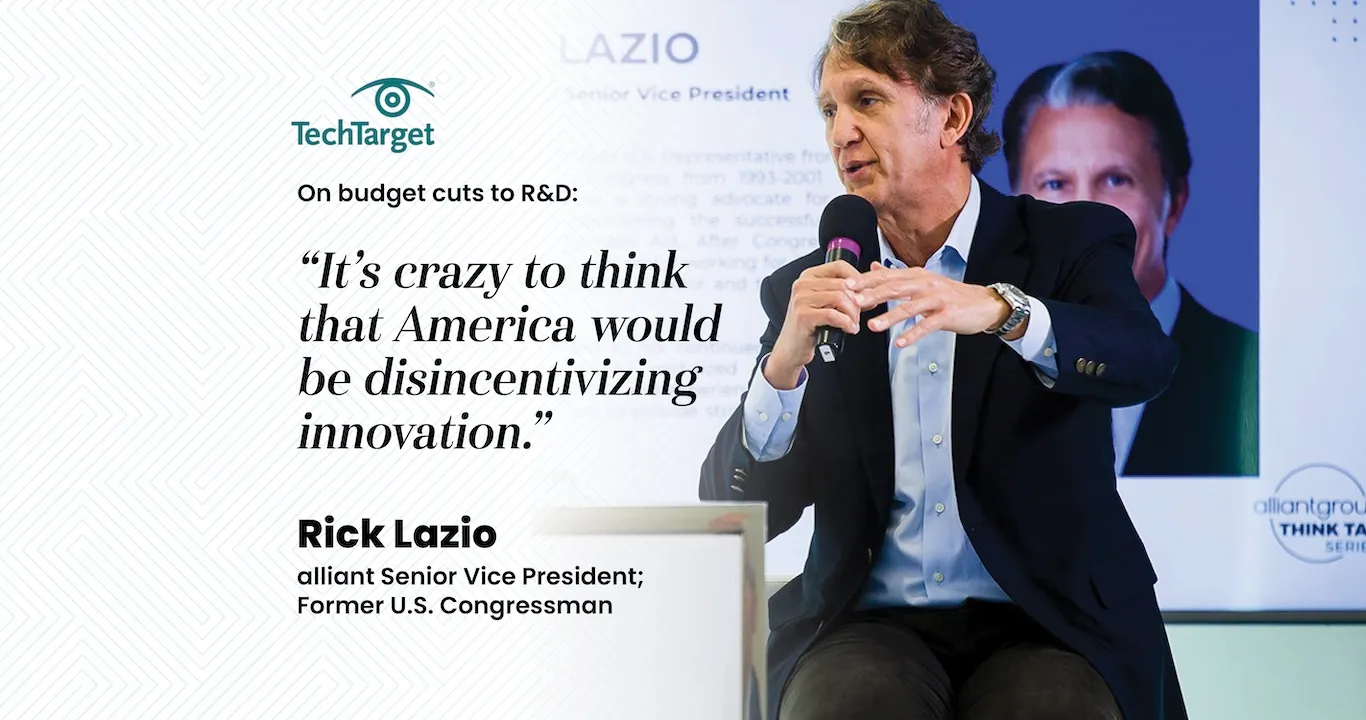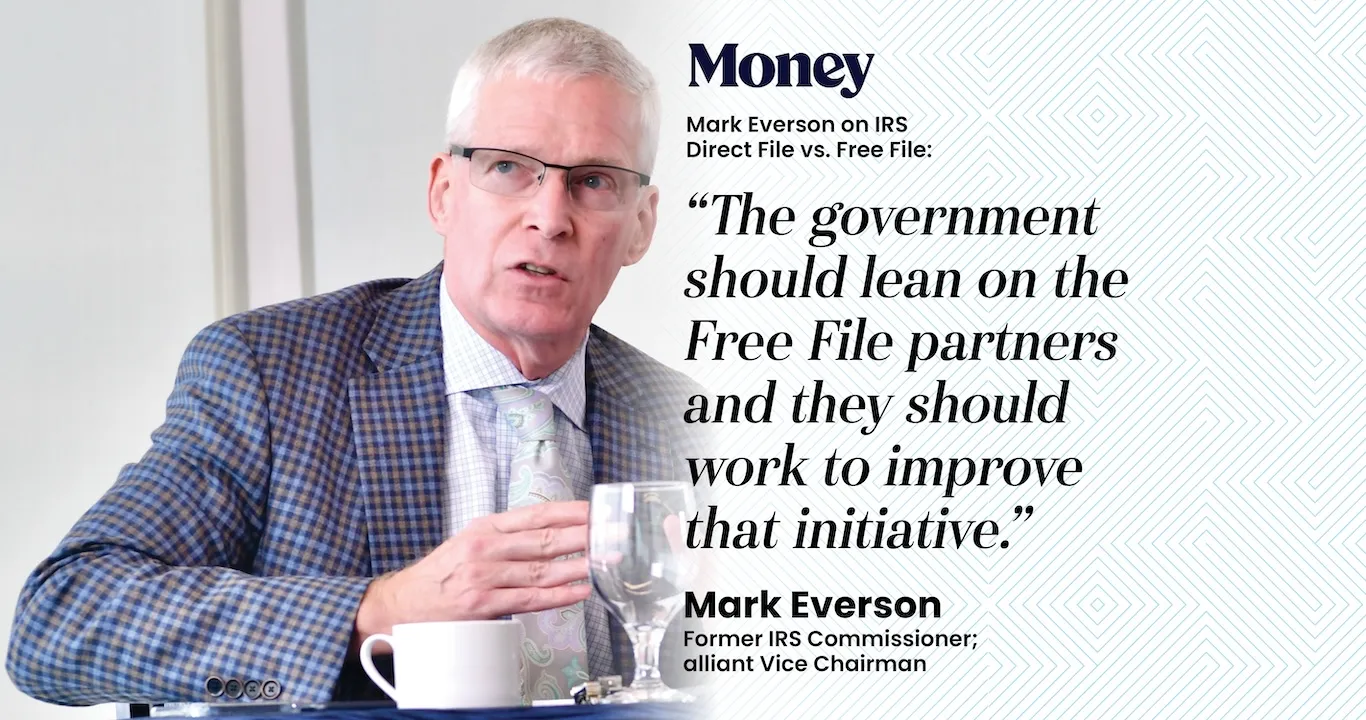If you have any questions about this article, please send us a message.
The IRS has released its strategic operating plan for spending $80 billion in extra funding over the next decade. Here’s a look at what it does—and doesn’t—include.
What’s Not Included
When flipping through what the IRS calls an “ambitious effort to transform the tax agency and dramatically improve service to taxpayers and the nation during the next decade,” it might help to know what’s not in the plan.
There is no 87,000 agents statistic-that-wasn’t. In fact, the report is surprisingly scant on numbers. That may well be purposeful—newly installed IRS Commissioner Danny Werfel has made clear that he intends to focus on deliverables, not dollars.
There is no shiny new toy. Often, rollouts of spending plans are accompanied by touting a particular spend—a piece of machinery, a new logo, or a new building—intended to symbolize change. You won’t find that in the plan. While there are plans to bring on new employees and ramp technology, the plan doesn’t focus on any single investment as a game-changer.
There is no reallocation of spending. While some stakeholders, including the AICPA, have criticized the amount of money directed to enforcement, this isn’t something the current Commissioner can change: only Congress can do that. These aren’t all discretionary dollars. Congress made specific carve-outs for enforcement, technology, and service as part of the Inflation Reduction Act. The IRS cannot, on its own, redraw those lines.
What the IRS can do is outline its plan for spending those dollars—as already directed—to achieve specific initiatives. Werfel is clearly embracing this as an opportunity not simply to add employees, but also change how the agency operates.
“The plan is a bold look at what the future can look like for taxpayers and the IRS,” Werfel said. “Now that we have long-term funding, the IRS has an opportunity to transform its operations and provide the service people deserve. Through both service and technology enhancements, the experience of the future will look and feel much different from the IRS of today. This plan charts the course forward for the IRS and tax administration.”
Plan Objectives
The plan focuses on five objectives, which Werfel says will be accomplished through a series of initiatives and projects:
- Dramatically improve services to help taxpayers meet their obligations and receive the tax incentives for which they are eligible.
- Quickly resolve taxpayer issues when they arise.
- Focus expanded enforcement on taxpayers with complex tax filings and high-dollar noncompliance to address the tax gap.
- Deliver cutting-edge technology, data, and analytics to operate more effectively.
- Attract, retain, and empower a highly skilled, diverse workforce and develop a culture that is better equipped to deliver results for taxpayers.
The five objectives will be accomplished through specific initiatives outlined in the plan. The plan contains 42 initiatives to achieve IRS goals, including multiple key projects and milestones. The plan covers over 190 key projects and more than 200 specific milestones. For each milestone, the plan includes particular timeframes by year (it’s also indexed this way at the end of the report).
The IRS that emerges from this plan, says Werfel, “will deliver a best-in-class experience for taxpayers”—echoing a promise from his confirmation hearing.
Also, in keeping with a promise made at his confirmation hearing, Werfel reiterated that the IRS will ensure that the agency follows Treasury Secretary Yellen’s directive not to raise audit rates above historical levels for small businesses and households making less than $400,000. He emphasized that the agency is focused on pursuing high-income and high-wealth individuals, complex partnerships, and large corporations that are not paying the taxes they owe. That means, he says, that “the IRS has no plans to increase the audit rate for small businesses and households making less than $400,000.”

“A Massive Task”
Skeptics abound, of course, and there will be those who are disappointed with the plan, including the lack of specific dollars and numbers. But Mark Everson, former IRS Commissioner and current Vice Chairman at alliantgroup, noted positives in what he referred to as “a massive task,” including the promise to quickly resolve issues when they arrive. This is, he says, an important marker because it is an explicit recognition that the agency needs to move more quickly. Backlogs and the inability to reach the IRS have increased tensions with taxpayers and other stakeholders.
Signs Of Change
Werfel indicated in the report that the agency is already working to resolve some of those issues. “People can see the first signs of change this filing season following this infusion of funding,” Werfel said. “Taxpayers and tax professionals can see the difference as we have dramatically improved our phone service thanks to more staff. More walk-in services are available across the country. New digital tools have been added. And these are just first steps.”
Specifically, he noted that the IRS has already hired more than 5,000 new customer service representatives and is beginning to hire approximately 650 new employees to work in Taxpayer Assistance Centers across the country. While the IRS has not been regularly picking up the phone for taxpayers, the agency has introduced a customer callback option for 75% of calls to IRS live assistance toll-free telephone lines, with plans to expand coverage to 95% of taxpayers calling by the end of July 2023.
As for that backlog? The inventory of original individual returns waiting to be processed in January of 2022 was 4.7 million—those were reduced to pre-pandemic levels between 400,000 and 1 million in January 2023.
New Hires
Werfel indicates that the future will bring additional improvements, with taxpayers getting more online access to their tax accounts. Detailed refund information will be easier to track through enhancements to the “Where’s My Refund?” tool. And, he says, many more service improvements are detailed in the plan.
“For years, the agency has not had the resources to provide the service people deserve. Across all of our operations we’ve seen the impact. We’ve lost employees and seen our resources stretched thin with new mandates and an increasingly complex economy,” Werfel said. “The IRS looks forward to demonstrating how the actions under this plan will translate into real improvements for taxpayers. Technology as well as in-person assistance will be cornerstones of this effort.”
As part of that plan, Werfel will use the funding to add capacity “to unpack the complex filings of high-income taxpayers, large corporations and complex partnerships.” That includes addressing the gap between the number of experienced compliance personnel at the IRS who audit high-income, high-wealth tax filings for compliance (currently about 2,600 employees) and those they will focus on—the roughly 30,000 individuals making more than $10 million a year, 60,000 large corporations and 300,000 large partnerships and S corps.
“Effective enforcement is an important component of this plan,” Werfel said. “Revenue collected by the IRS supports everything from the nation’s defense to education and roads.”
A “first wave of specialists” to work toward increasing compliance coverage rates for large corporations is earmarked for fiscal year 2023, with similar goals for complex partnerships also in the plan. Audit rates for more complicated structures have been low—in 2019, the audit rate for partnerships was 0.05%—and increasing those rates should, the IRS says, bolster compliance.

Everson agrees that hiring new employees will be critical to the plan’s success. The challenge, he says, is whether they can hire and train the right people to do all of the enforcement work that’s proposed. These are, he noted, highly technical cases—enforcement focused on high-income taxpayers can be complicated. Filling those jobs won’t happen overnight. It could take a long time, Everson warns, “to get that pipeline filled.”
The plan suggests significant changes in hiring overall, including making it faster and more efficient (as someone with friends at IRS, I can attest that the hiring process can be slow). The IRS will also consider “geographic flexibility in our hiring models”—which may hint at more remote options. The IRS also wants to increase its presence for job-seekers, including revamping its career page, making inroads into schools (it worked for this IRS-CI agent), and creating better in-house growth models, such as IRS-wide leadership, mentorship, and coaching programs.
Technology
Improving technology is another feature of the plan. According to the report, IRS employees and taxpayers use over 600 applications today, many over 20 years old.
And currently, taxpayers are limited in what they can do online. The plan aims to allow taxpayers to file documents and responses online and download their data and account history—with plain language on transcripts. The IRS is also exploring the option for taxpayers to file certain tax returns directly with the IRS online. And the plan expects that taxpayers will have access to new status-tracking tools by 2024 to see real-time status updates, next steps, and estimated time to process documents and resolve issues.
Of course, ultimately, the IRS wants to get paid. The plan would allow taxpayers and third parties to make payments through online accounts, with options to pay by bank account, credit or debit card—or digital wallet. (That’s right, by 2026, you might be able to pay the IRS in crypto.) Foreign taxpayers who often complain that they are overlooked get a nod, too—those with foreign bank accounts and foreign currency would be able to make and receive payments.
Options for taxpayers who can’t pay will go digital, too. The IRS wants to use data and analytics to develop solutions tailored to taxpayers’ circumstances, including proactively offering short-term payment plans or installment agreements to eligible taxpayers and developing processes to quickly identify accounts that miss payments so that taxpayers can be contacted immediately via the channel of their choice (imagine getting a text when it happens instead of an angry letter kicking you out of a plan weeks later).
There are planned improvements for tax professionals, too. The plan suggests that tax professionals should be able to manage their client authorizations online, as well as view clients’ balances, payment histories, and notices and act on their behalf to make payments, set up payment plans, and complete other account updates—a significant improvement over what is currently available.
Money spent on technology, including data analytics, will have a “tremendous impact on services,” according to Everson. But he cautions that the agency must be extremely careful of how they deploy new technology and utilize the analytics. There are clear concerns about the kinds of information IRS has access to, what they could be seeking, and how it could be used. As it aims to incorporate more technology as a resource, the agency, Everson stresses, will have to find “the right balancing act.”
And, he says, the agency will have to be careful to roll out the right technology—specifically, tech that’s accessible and reliable. He points to the previous rollout of facial recognition software as something that didn’t work exactly as advertised, resulting in controversy and unhappy taxpayers. Incorporating new tech should be deliberate, Everson maintains, and done correctly so that it’s accepted and used by taxpayers.
The plan emphasizes educating taxpayers about available deductions and credits, including the earned income tax credit—the IRS estimates that 21% of all eligible taxpayers did not claim the EITC Credit in the 2019 tax year. A little eyebrow-raiser here, perhaps, in that the plan suggests that by 2025, the IRS could reach out to “lawful non-filers who may be eligible for a credit or deduction to ensure they are aware of their eligibility and have the tools and assistance necessary to claim appropriate credits or deductions.” Everson notes that’s a real change from past practices.
A Sea Change
But then, the entire plan has that feel. It doesn’t feel like an add-on but more like a complete renovation. Done right, that should appeal to both sides of the aisle in Congress. There have been recent calls to repeal the IRS altogether, which raises the very real question of what would be created in its place—and how expensive it might be. Werfel’s plan has an air of dismantling the old system while relying on some of the existing parts to move forward.
No More Cuts
While the plan focused on the additional funding that Congress approved, Werfel included a plea for “sustained annual resources for IRS operating costs.” A GOP-led House has threatened to roll back funding. That, says Werfel, would require IRA funding to be shifted to general operations. The result, he argues, would be to the detriment of the service, technology, and compliance initiatives envisioned to transform the IRS and would lead to more noncompliance, decreased revenue collection, and increased deficits.
Werfel notes that the Congressional Budget Office estimates that the additional $80 billion under the IRA will increase federal revenue by more than $180 billion in the decade ahead, considering only direct enforcement revenue based on additional staffing. Werfel says his agency believes that the directives in the plan—including improving service, issue resolution, and effective enforcement—will increase tax compliance and result in more federal revenue.
“This plan is only the beginning of our work,” Werfel said. “This is a unique opportunity for the IRS and the nation, and we will continue to work closely with our partners as this effort moves forward. This investment in the IRS is already helping taxpayers this tax season, and this plan shows that historic changes are coming.”
You can read the 150-page report to the Secretary of the Treasury here.
About Mark Everson

The Honorable Mark W. Everson was the nation’s 46th Commissioner of Internal Revenue Service serving from 2003 until 2007. Prior to joining the IRS, Everson held Bush administration posts as Deputy Director for Management at the Office of Management and Budget and Controller of the Office of Federal Financial Management. Everson also served in the Reagan administration, holding several positions at the United States Information Agency and the Department of Justice, where his assignments included Deputy Commissioner of the Immigration and Naturalization Service. At the state level, Everson oversaw the Indiana Workforce and Unemployment Insurance Systems under Governor Mitch Daniels.



